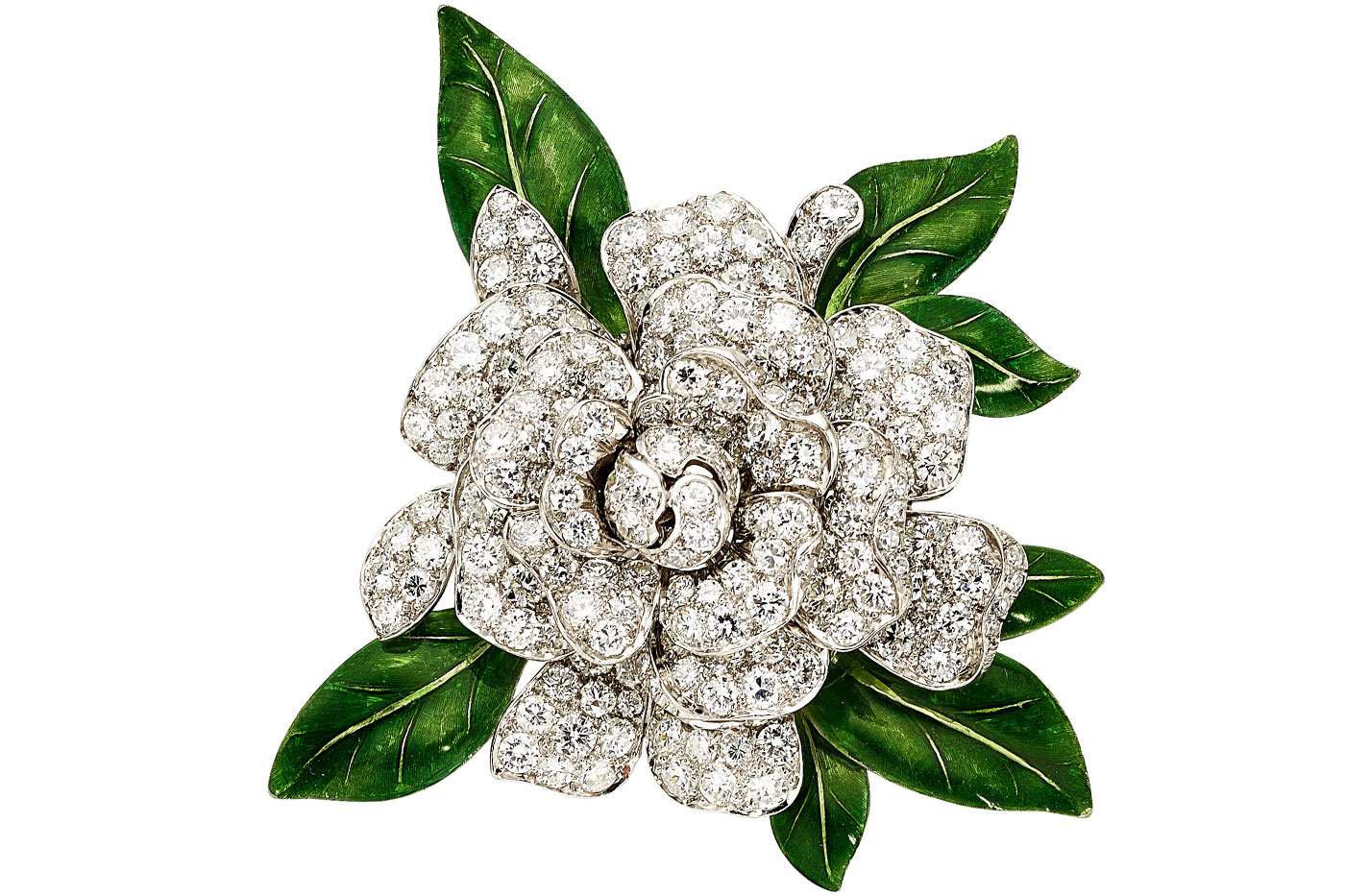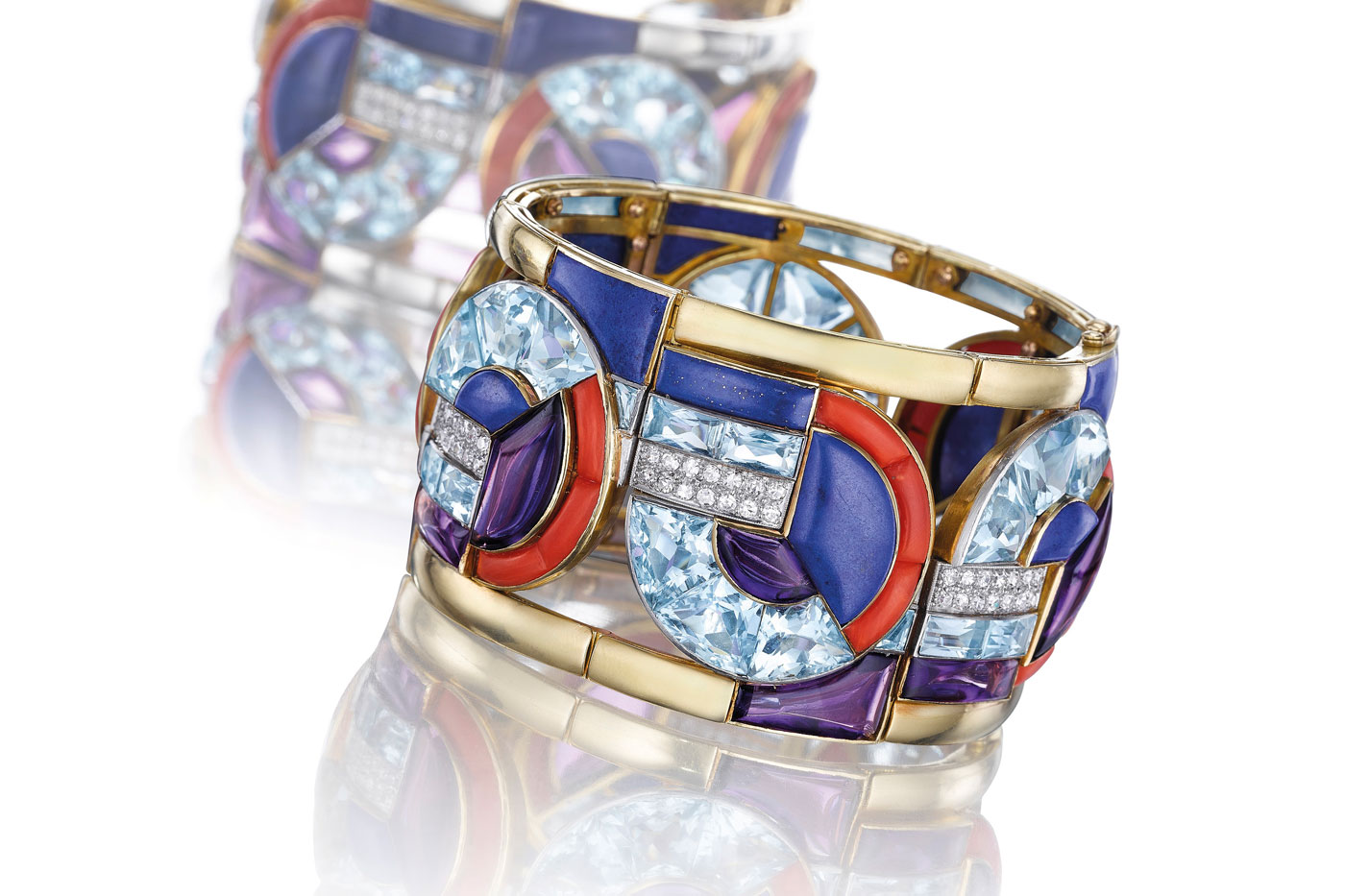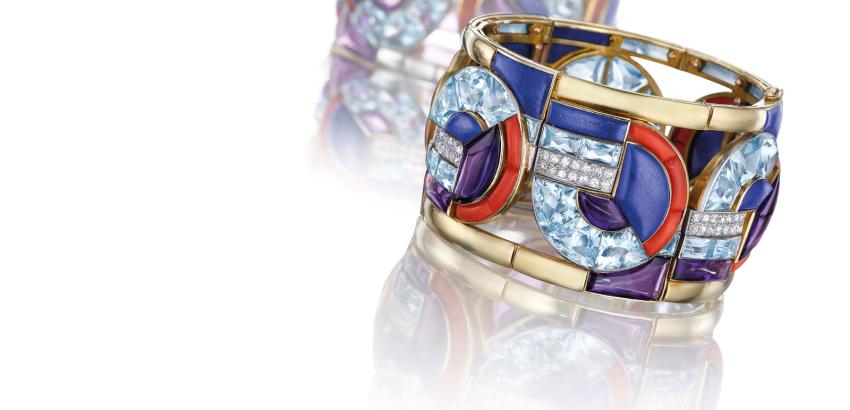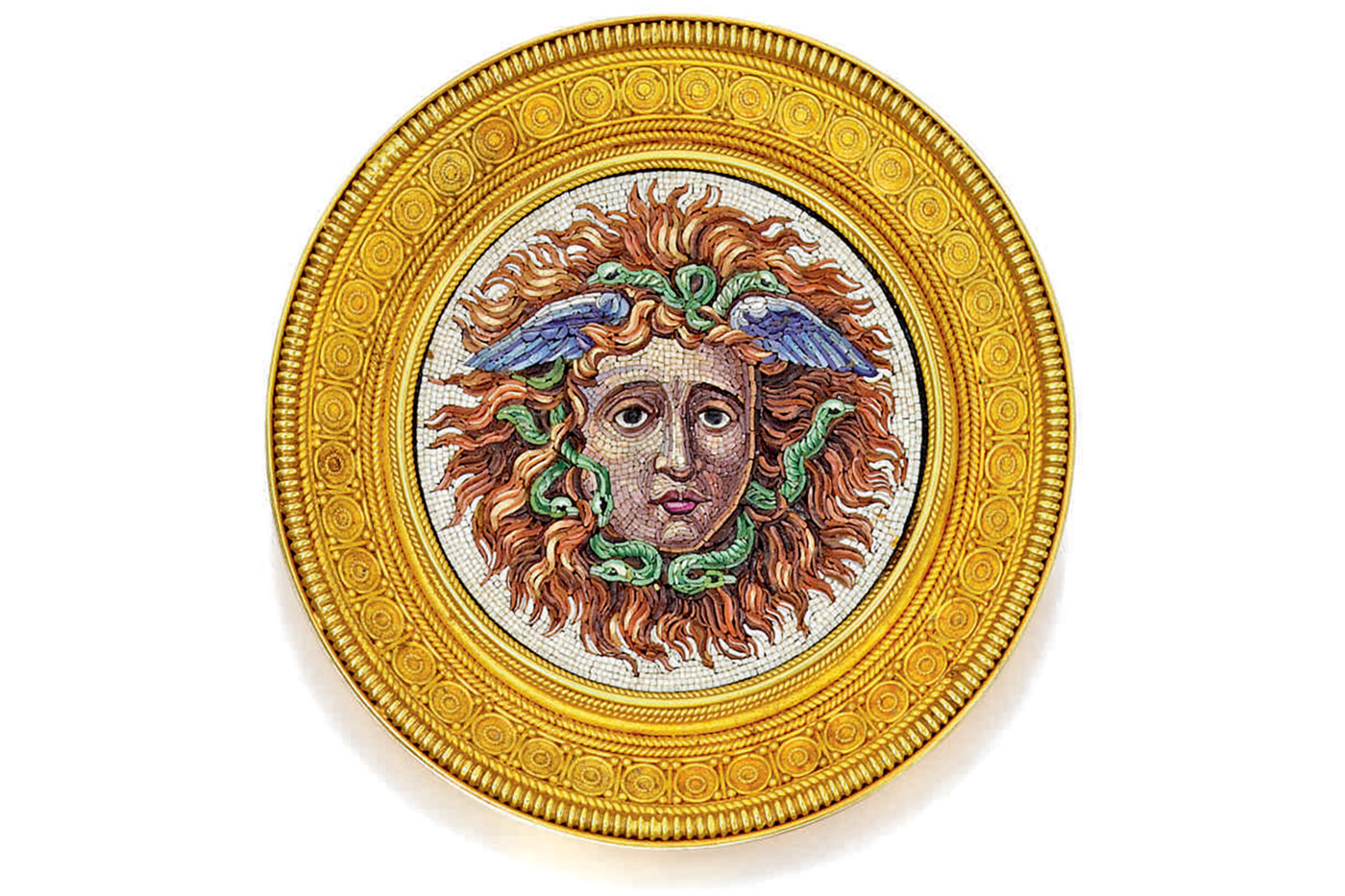
Scent of a gardenia
Oscar Heyman diamond and enamel flower brooch, $12,500
Heritage Auctions, New York, December 4, 2017
Plucked from a magical garden, this diamond and green enamel gardenia brooch by Oscar Heyman Bros. exquisitely captures the exotic allure of a gardenia. The articulated petals, set with a total of 6.20 carats of round diamonds, rise up in tiers above the leaves that are fashioned from mottled shades of green enamel, all of it set in platinum. Oscar Heyman is known for its floral brooches, each one an individual work of the finest artistry and craftsmanship, hand made in its New York workshops since 1912. For decades, the firm was known as the anonymous “jeweler’s jeweler” because it signed its pieces with the name of the retailers who sold them. As word spread among connoisseurs that the finest pieces were actually made by Oscar Heyman Bros., the family decided to step forward and proudly claim its rightful heritage and name.
Third-generation family member Tom Heyman entranced those who came to a special pre-sale viewing party with his detailed description of the care and precision with which an Oscar Heyman piece is made. Each element is designed and made to nestle next to and above its neighbors. The gently arched enamel leaves were shaped to both enhance and form the underpinning of the petals, set with more than 100 full-cut diamonds. The brilliant sparkle of the high quality diamonds contrasts with the brilliant green of the leaves, inspired by nature. The brooch is as three-dimensional as the flower that it emulates. It attracted hundreds of views online before it was sold for $12,500.
Photo courtesy of Heritage Auctions, HA.com

Essence of Deco
Fouquet Art Deco bracelet, $924,500
Christie’s New York, December 6, 2017
“It’s like wearing the Empire State Building on your wrist,” said Rahul Kadakia, international head of jewelry for Christie’s, during the pre-sale viewing of the Art Deco bracelet designed by Georges Fouquet and A.M. Cassandre. His reference to one of the classic examples of Art Deco design evokes the underpinnings of the period as seen in this bracelet in particular. This masterpiece of design and craft was one of a collection of jewels the two men created together for the Paris Exposition of 1925, known as L’Exposition des Arts Decoratifs, or Art Deco. The fair was intended to bring together the finest examples of that era across the design spectrum.
Cassandre was known for posters that captured the essence of the new “machine age.” Their bold colors and graphics that seemed to speed right out of the picture frame expressed the new art form in two dimensions. Georges Fouquet was head of his father’s jewelry firm from the turn of the 20th century. He and his son Jean moved the firm’s design sensibility from the sensuous forms of Art Nouveau to the jazzy geometrics of Art Deco. When the fair was in the planning stage, Fouquet was named head of its jewelry section.
This bracelet is the ultimate expression of Art Deco, combining bold gemstones in various cuts and colors, along with single cut diamonds. The wide bracelet combines lapis lazuli, coral, amethyst and aquamarine. The gemstones, three of them opaque, the fourth transparent, were chosen for their bright, contrasting tones. All the elements were combined in a setting that is half gold and half platinum, another bold choice by the makers. Until this sale, this bracelet remained in the same family since it was purchased in 1925, a rarity of provenance that shows an appreciation for its unique beauty. The bracelet soared past its pre-sale estimate of $400,000-600,000 to over $900,000. It was sold at Christie’s New York headquarters, housed in an Art Deco building that is part of Rockefeller Center.
Photo courtesy Christie’s Images
































